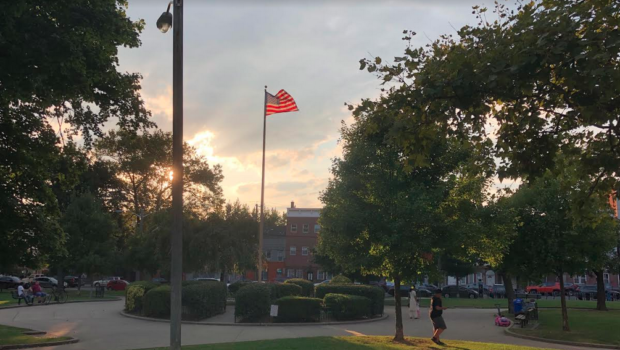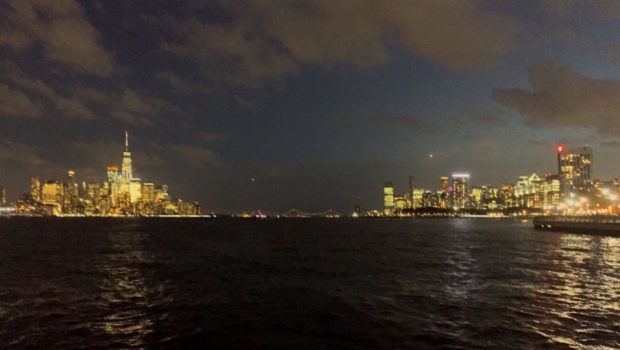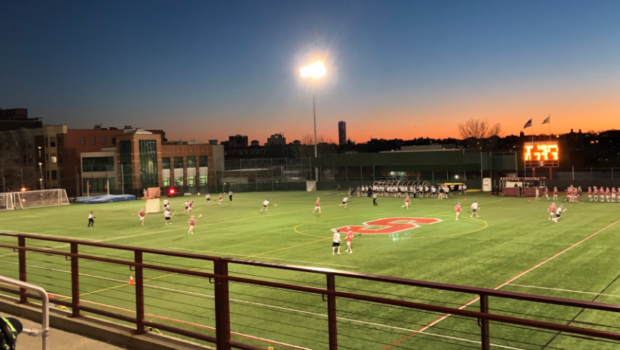
GLENN MORROW’S CRY FOR HELP: Debut Album from Hoboken Legend’s Latest Project | REVIEW
(ABOVE: Photo by Mark Jaworski)
by Jack Silbert
- 1978: Glenn Morrow and his band ‘a’ are the first ever performers at Maxwell’s.
- 1981: Morrow’s band The Individuals release their debut EP. The band earns critical praise from the Village Voice and New York Times, and their 1982 album contains the college-radio hit “Dancing With My 80 Wives.”
- 1986: Morrow’s band Rage to Live is the first release on Hoboken’s Bar/None Records. Soon, Morrow is co-running the label, which still thrives today, and has put out albums by They Might Be Giants, Yo La Tengo, The Feelies, The Front Bottoms, and many more.
As a successful label head and a well-respected godfather of the Hoboken Sound, Morrow certainly had nothing to prove. But the urge to perform nagged at him, resulting in the excellently named band Glenn Morrow’s Cry For Help. After spending a couple of years gigging and writing songs, their self-titled debut was just released via the upstart Jersey City label Rhyme & Reason Records. And the album shows that Morrow is just as vital to today’s Hoboken scene as he has been in the past.
Things kick off with the mid-tempo “Bleecker and Third,” allowing us to meet the band: Morrow himself is in fine, sturdy voice, lead guitarist Ric Sherman provides nice flavoring, while bassist Mike Rosenberg reliably holds down the bottom end. And there’s a steady backbeat from drummer Ron Metz, who has anchored such classic Hoboken bands as Human Switchboard and The Schramms. The album hits its stride with the triumphant “The Days to Come,” already singled out as one of NPR’s Songs We Love. It’s the first of the tunes here to feature keyboards by the great Andy Burton, accompanist for everyone from Beck to Rufus Wainwright.
 Of particular local interest is “Comfort Zone,” with its tale of the personal impact of Superstorm Sandy. “The water rose in the dark, made its way to 4th and Park, and it left its mark on everything we know,” the song begins. Later we hear of someone who “lost his record library, everything from V to Z, that means XTC, Yo La Tengo, and the Velvet Underground.” It’s a haunting snapshot of those dark days but ultimately a message of resilience, complete with a comforting guitar solo by Sherman.
Of particular local interest is “Comfort Zone,” with its tale of the personal impact of Superstorm Sandy. “The water rose in the dark, made its way to 4th and Park, and it left its mark on everything we know,” the song begins. Later we hear of someone who “lost his record library, everything from V to Z, that means XTC, Yo La Tengo, and the Velvet Underground.” It’s a haunting snapshot of those dark days but ultimately a message of resilience, complete with a comforting guitar solo by Sherman.
The tempo picks up again with the R.E.M.-like “Pony Express,” Rosenberg and Sherman’s backing “oh-oh-oh”s and “That’s what lovers do” pacing the jaunty track. “Third Act” has a mellower, 70s vibe, while “Let the Kid Come Out” is rollicking and Stonesy. In “Keira Knightly,” Morrow surveys the modern world of privilege, as the song grows in intensity. Styles continue to vary: “When Night Falls” rides Sherman’s insistent guitar; “Electricity” is a bouncy rocker; “44” begins sparely, building to a woozy, swirling peak.
The final track, “Return of the Wild One,” alternates between being the album’s toughest rocker — the band letting loose, Metz pounding away — and a slice of psychedelia.
Cleanly produced by New Jersey studio guru Ray Ketchem, the album is proof positive that Morrow still has plenty to offer both musically and lyrically. Rather than a cry for help, it’s a call to arms.
The self-titled album by Glenn Morrow’s Cry For Help is now available everywhere from Tunes (225 Washington St.) to iTunes. Or pick it up directly from the band at HiFi (169 Avenue A, NYC) this Wednesday at 8 pm, at a record-release performance.

Glenn Morrow’s Cry For Help on stage at Little City Books (Jack Silbert photo)

 Previous Article
Previous Article Next Article
Next Article FEATURED PROPERTY: 1033 Park Avenue, Hoboken; Historic Row House, 5BR/3.5BA—$2,800,000
FEATURED PROPERTY: 1033 Park Avenue, Hoboken; Historic Row House, 5BR/3.5BA—$2,800,000  FEATURED PROPERTY: 1500 Washington Street #3D, Hoboken | 2BR/2BA Hudson Tea Building Corner Unit | $1,075,000
FEATURED PROPERTY: 1500 Washington Street #3D, Hoboken | 2BR/2BA Hudson Tea Building Corner Unit | $1,075,000  hOMES: Weekly Insight Into Hoboken & Jersey City Real Estate Trends | September 13, 2019
hOMES: Weekly Insight Into Hoboken & Jersey City Real Estate Trends | September 13, 2019  UNDERWATER SWEARING: New Album From Viktor.digital Streaming NOW
UNDERWATER SWEARING: New Album From Viktor.digital Streaming NOW  hOMES: Weekly Insight Into Hoboken & Jersey City Real Estate Trends | January 4, 2019
hOMES: Weekly Insight Into Hoboken & Jersey City Real Estate Trends | January 4, 2019  hOMES: Weekly Insight Into Hoboken & Jersey City Real Estate Trends | October 12, 2018
hOMES: Weekly Insight Into Hoboken & Jersey City Real Estate Trends | October 12, 2018  hOMES: Weekly Insight Into Hoboken & Jersey City Real Estate Trends | February 23, 2018
hOMES: Weekly Insight Into Hoboken & Jersey City Real Estate Trends | February 23, 2018  hOMES: Weekly Insight Into Hoboken & Jersey City Real Estate Trends | March 29, 2019
hOMES: Weekly Insight Into Hoboken & Jersey City Real Estate Trends | March 29, 2019